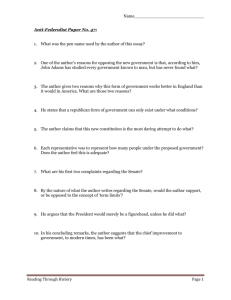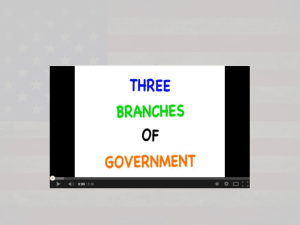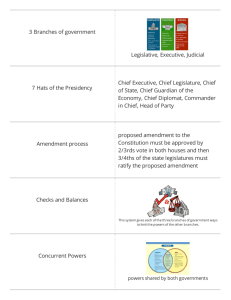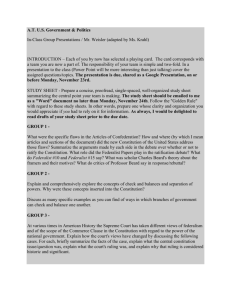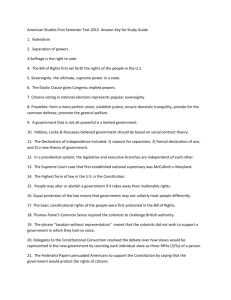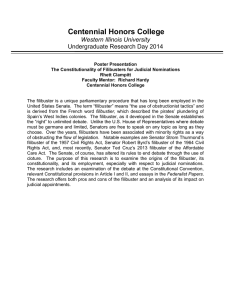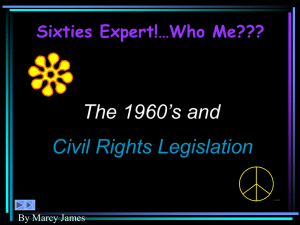The Principles behind Law
advertisement
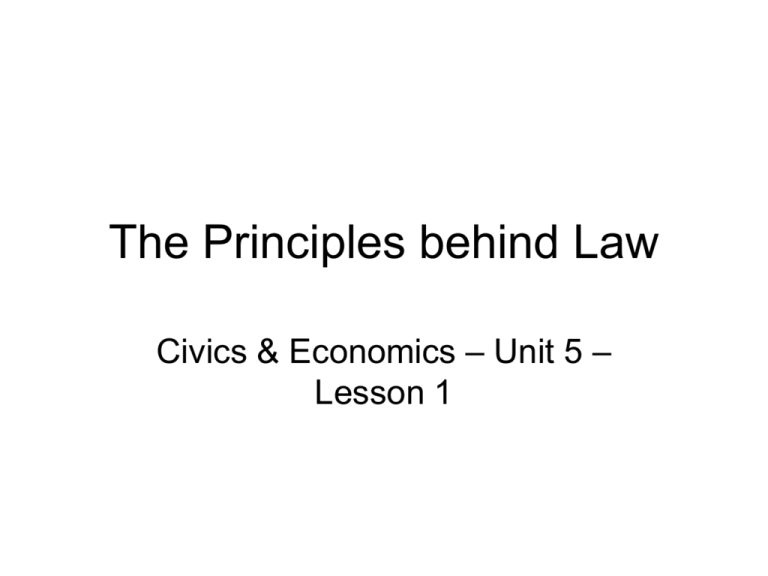
The Principles behind Law Civics & Economics – Unit 5 – Lesson 1 Guiding Question • What are the basic principles that drive the legal system and legislation in the United States? We are Learning • The major principles that drive our legal system Because • Informed and effective citizens understand the basic ideas behind laws and government At the end of this lesson I CAN • Define the rule of law and explain why it is an important concept for democratic governance. • Define the concept of “equal protection under the law” • Identify and explain the specific constitutional and legal protections that provide equal protection to all citizens • Define limited government • Explain how a bill becomes a law in the US and NC • Explain the role of the executive, legislative, and judicial branches in the federal law making process. • Explain procedural techniques for blocking legislation • Identify and explain the constitutional and legal protections against the abuse of power by the government The Rule of Law • Definition: everyone must follow the law • Importance: the rule of law protects the rights of citizens and ensures against the abuse of power by the government Equal Protection Under The Law • Definition: the right of all persons to have the same access to the law and courts, and to be treated equally by the law and courts, both in procedures and in the substance of the law. • Constitution: 5th amendment (due process), 14th amendment (equal protection clause) Limited Government • The power of government is limited to help protect the rights of citizens • Constitution only grants certain powers to government • Amendments and clauses help protect rights of the people • Checks & balances & separation of powers help limit the power of government How a bill becomes a law - US 1. Bill is drafted & introduced 1. 2. Can be introduced in Senate or House Only house can introduce tax bills 2. If no objections, bill is sent to committee 3. If ok with committee bill is brought to the floor of where it was introduced for debate 1. 2. House is limited in time to debate Senate has unlimited debate (filibuster) How a bill becomes a law - US 4. Bill goes to the next chamber 1. If started in House it goes to Senate 2. If started in Senate it goes to House 5. Conference committee works out differences in versions between House & Senate 1. When agreement is worked out it goes to both chambers again for agreement How a bill becomes a law - US 6. Goes to President 1. President can sign into law or veto 2. Congress can over-ride a veto with a 2/3rd vote in both houses How a bill becomes a law - NC • Same process as US except – Governor signs or vetoes instead of President – Requires a 3/5th vote to override a veto Role of Each Branch in Lawmaking • Legislative – makes laws • Executive – enforces laws • Judicial – interprets laws and makes sure they are constitutional How legislation is blocked • Filibuster – In Senate – Senator can filibuster (speak for an unlimited amount of time to keep a bill from being introduced/debated) – Cloture stops a filibuster Protections Against Government Abuses of Power • 8th Amendment – no cruel or unusual punishment • Separation of powers – limits power of each branch • 9th amendment – recognizes that people have other rights not listed in Constitution • 10th amendment – recognizes reserved powers of the states Protections Against Government Abuses of Power • No ex post facto laws – can’t get in trouble for breaking a law if you did the action before it was a law • Writ of habeas corpus – people arrested/detained must be brought before the court to make sure the detainment is appropriate • War Powers Resolution – limits president’s power to commit the US to military action without the approval of Congress

